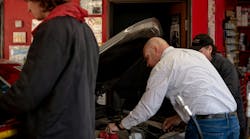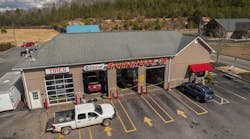The National Transportation Safety Board (NTSB) is calling on car makers and auto regulators to make sure that all new passenger and commercial vehicles come with automatic collision avoidance technology, which the board says could mitigate more than 80 percent of deaths and injuries due to rear-end crashes. The NTSB has called on automakers to implement avoidance technology before, but they haven't heeded the call — the board says that only four models of passenger vehicles included a complete forward collision avoidance system as a standard feature last year. "You don’t pay extra for your seatbelt," Christopher Hart, NTSB chairman, said in a statement. "And you shouldn’t have to pay extra for technology that can help prevent a collision altogether."
Regulators will need to encourage automakers to start doing this
As part of a report issued this week, the NTSB is recommending that the National Highway Traffic Safety Administration begin developing standards for systems that can avoid rear-end collisions. The board wants automakers to begin including collision warning systems immediately and to add in assisted braking and autonomous braking once standards are finalized. The NTSB's general vision of this system is that it might warn a driver as they're approaching a potential collision and need to brake, begin braking for the driver if there's no response, and finally stop the car if necessary. The board believes that these systems can provide even more safety as they become integrated with connected cars in the future.
While the NTSB's recommendations sound like excellent suggestions, there's no immediate reason to believe that they'll lead to changes. As the board notes in apparent aggravation, it's made 12 recommendations in favor of implementing similar technology over the past 20 years, and not much has happened. This week, it's suggesting that regulators create incentives for automakers to implement these systems, such as by factoring collision avoidance systems into car safety ratings. These systems seem increasingly doable as automakers continue their research into autonomous driving tech, so we can hope these recommendations don't have to go on for another 20 years.
This article originally appeared on MSN.





